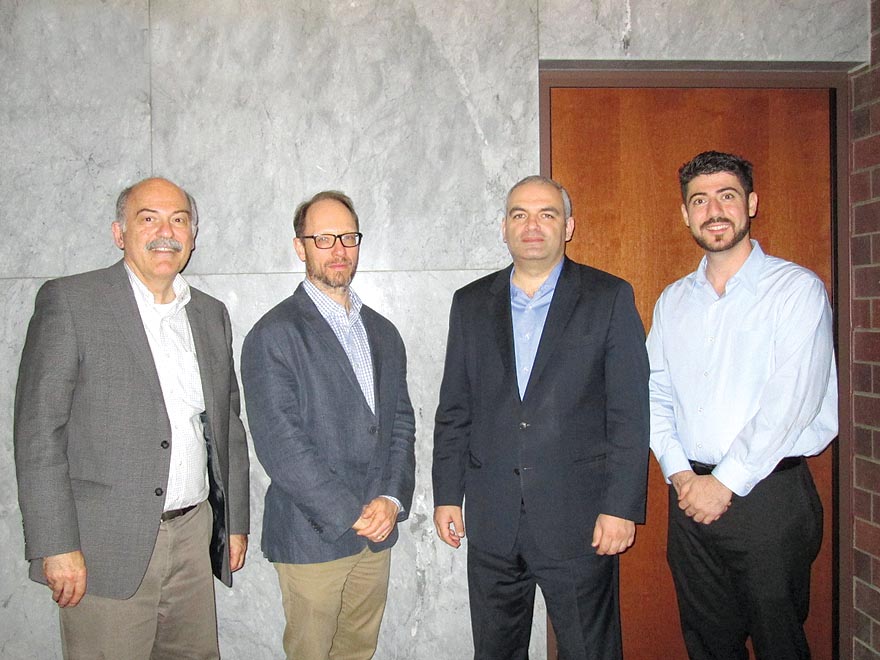
Staff Report
The Armenian Studies Program hosted a presentation by Dr. Hayk Demoyan on “Multiple Identities and Memories of the Armenian World” on Monday, March 19. Dr. Demoyan, director of the Armenian Genocide Museum-Institute in Yerevan, spoke to an audience of students and community members at Fresno State.
Dr. Demoyan’s presentation was based on his research in the area of Armenian memory and identity. He utilized images taken during the last ten years of his field-work to show how memory is contested in physical structures that have symbolic meaning. Dr. Demoyan stated that examples such as statues, street names, and place names could be interpreted from both a cultural viewpoint and from a national security standpoint. The naming of the structure is a way to give a narrative power, although some people contest the narratives.
The naming of streets and cities represents one such example. Dr. Demoyan illustrated the example of contesting viewpoints through the controversy over the potential renaming of Amiryan Street in downtown Yerevan. Named after a commissar in the Baku Commune, some want to change the name, embroiling Yerevan City Hall in the dispute.
Dr. Demoyan also discussed “memory sites,” places where monuments are constructed to instill a certain history. Dr. Demoyan used the statue of Stalin which used to tower over Victory Park in Yerevan as his example, but which has now been replaced with Mother Armenia. Stalin’s statue was a reminder of his power in the Soviet Union, but after his death the statue lost its significance.
There are still some statues of Armenian communist leaders that remain in Yerevan, but all of those who were not also Armenian have been removed. Thus, the national issue has higher priority than the ideological issues.
Renaming streets, cities, and regions is a way to demonstrate political power in the contest over memory. Dr. Demoyan stated that a special commission has been created in Armenia to discuss possible name changes. Over the centuries, because of foreign rule, some city acquired Persian or Turkish names. These were often easy to change into Armenian because they were translations from the original Armenian.
Gyumri was the first city in the Soviet Union to be named after Lenin after his death—Leninakan. The same city had formerly been called Alexandropol in the Tsarist period, and after the breakup of the Soviet Union, it became Gyumri once again.
The start of the Karabagh movement in 1987, is another illustration of how memory plays a significant role in society. When Armenians in Karabagh united to demand the independence of Karabagh, Azerbaijan responded with pogroms against Armenians. For Armenians, these events revived memories of the Armenian Genocide, and they associated the two narratives of the Genocide and 1988.
Dr. Hayk Demoyan is a U.S. Fulbright visiting scholar at the Davis Center for Russian and Eurasian Studies of Harvard University and is researching the identity transformation processes in the South Caucasus. He has been the Director of the Armenian Genocide Museum and Institute (AGMI) in Yerevan, Armenia since 2006.
Dr. Demoyan presented a new perspective on the politics of names.
 Hye Sharzhoom Armenian Action
Hye Sharzhoom Armenian Action